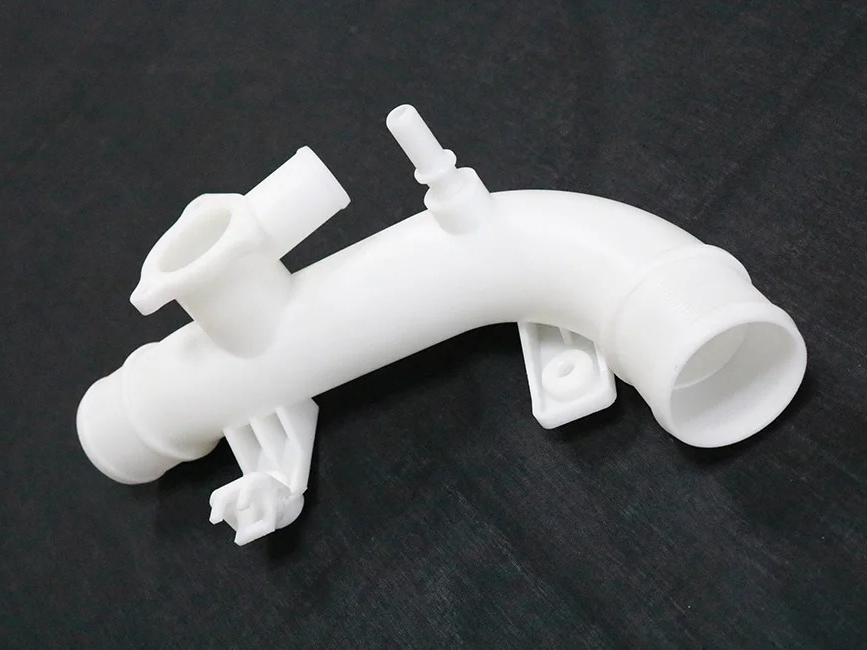Exploring Multi-Material Jetting (MMJ) Technology
Introduction
Multi-Material Jetting (MMJ) represents a cutting-edge advancement in additive manufacturing, enabling precise printing of multiple materials simultaneously with outstanding accuracy and realism. MMJ produces components featuring varied textures, colors, and mechanical properties in a single build by selectively depositing UV-curable resins through high-resolution inkjet heads. This makes it particularly suitable for realistic prototypes, intricate medical models, and multi-functional assemblies, surpassing the limitations of traditional CNC machining or injection molding.
At Neway, our specialized industrial 3D printing services harness MMJ technology to rapidly deliver complex prototypes and end-use components, dramatically reducing product development time and enabling greater design innovation across diverse industries.
How MMJ Works: Process Principles
Multi-Material Jetting operates on three core steps: selective resin deposition, UV curing, and support material removal. First, precise micro-droplets of multiple photopolymer resins are jetted onto the build tray using high-definition inkjet printheads. Immediately after deposition, these resin layers are solidified by UV lamps, producing highly accurate and robust parts. Finally, gel-like or water-soluble support materials are effortlessly removed post-printing, preserving delicate internal structures and detailed external geometries unattainable by conventional FDM or SLS technologies.
Common MMJ Materials
MMJ technology excels with specialized photopolymer resins tailored for distinct mechanical and aesthetic applications. Neway supports the following validated materials in our MMJ workflows:
Material | Tensile Strength | HDT @ 0.45MPa | Key Properties | Common Applications |
|---|---|---|---|---|
50–65 MPa | 50–60°C | Excellent detail, dimensional stability | Functional prototypes, consumer models | |
2–3 MPa | 40–50°C | Highly flexible, tear-resistant | Seals, gaskets, ergonomic prototypes | |
60–70 MPa | 55–60°C | Durable, impact-resistant | Mechanical components, snap-fit parts | |
55–65 MPa | 50°C | Optically clear, high precision | Lens prototypes, transparent casings |
Key Technical Features of MMJ Technology
Multi-material jetting technology distinguishes itself through precision, multi-material flexibility, and excellent surface quality. The following technical attributes are validated according to ASTM and ISO industry standards:
Precision & Resolution
Layer Thickness: Capable of ultra-fine 14–28 microns (0.014–0.028 mm), allowing for highly detailed features.
Dimensional Accuracy: ±0.1 mm (ISO 2768 standard), significantly surpassing typical FDM (±0.5 mm) and SLS (±0.3 mm).
Minimum Feature Size: Capable of printing features as small as 0.1 mm, optimal for microfluidic devices, detailed texturing, and precision components.
Mechanical Performance
Tensile Strength: Uniform strength (60–70 MPa for Digital ABS, ASTM D638) across XYZ axes.
Elongation at Break: Elastomeric resins provide up to 220–270% elongation, ideal for flexible components.
Thermal Stability: Moderate heat deflection temperatures suitable for functional testing and prototypes (up to ~60°C, ASTM D648).
Production Efficiency
Rapid Build Rates: Vertical build speeds of 15–20 mm/hour, facilitating prototype turnaround within hours.
Multi-Material Capabilities: Simultaneous jetting of rigid, flexible, and transparent resins, eliminating the need for assembly.
Minimal Post-processing: Quick and efficient support removal reduces post-processing times by up to 60% compared to traditional methods.
Surface & Aesthetic Quality
Surface Finish: As-printed Ra <1 μm, providing injection molding-like smoothness.
Full-color Integration: Capable of producing over 500,000 distinct color variations and realistic textures directly during printing.
Core Advantages Over Conventional Methods
Cost Efficiency for Prototypes: Eliminates tooling, reducing prototype costs by up to 50–60% compared to CNC machining.
Material Efficiency: Nearly 100% resin utilization, greatly reducing waste compared to CNC machining’s typical 60–80% material loss.
Advanced Geometry and Lightweighting: Facilitates complex internal channels, lattice structures, and optimized designs, reducing weight by up to 70% without compromising strength.
Component Consolidation: Reduces multi-part assemblies into single integrated prints, decreasing component count by 60–80%.
Rapid Iterations: Delivers functional prototypes from CAD to physical parts within hours, significantly outperforming CNC machining (typically 5–15 days).
Parallel Part Production: Prints diverse, unique parts simultaneously within a single job, beneficial for rapid validation in industries like medical devices and electronics.
Consistent Material Properties: Isotropic mechanical properties, with tensile strength variation below 5%, significantly outperforming traditional additive technologies like FDM.
Durable Chemical Resistance: Robust material properties maintain integrity under prolonged chemical exposure, making MMJ suitable for harsh environmental testing.
MMJ vs. CNC Machining vs. Injection Molding: Manufacturing Process Comparison
Manufacturing Process | Lead Time | Surface Roughness | Geometric Complexity | Minimum Feature Size | Scalability |
|---|---|---|---|---|---|
Multi-Material Jetting | 4–24 hours (CAD direct, no tooling) | Ra <1 μm | ✅ High complexity, fine textures, internal structures | 0.1 mm | 1–500 units (optimal for rapid prototyping) |
CNC Machining | 3–7 days (programming and tooling setup) | Ra 1.6–3.2 μm | ❌ Limited complexity due to tooling constraints | 0.5 mm | 10–500 units (costly at scale) |
Injection Molding | 4–8 weeks (mold tooling required) | Ra 0.4–0.8 μm | ❌ Requires uniform walls, draft angles, no undercuts | 0.2 mm | >10,000 units (economical only at large scale) |
Industry-Specific MMJ Applications
Medical & Healthcare: Anatomically accurate surgical models, prosthetic prototypes, and medical training devices.
Consumer Goods: Realistic product design prototypes, consumer electronic casings, and multi-textured ergonomic devices.
Automotive Engineering: Interior panel concepts, flexible, functional prototypes, transparent lighting components.
Aerospace & Aviation: Detailed cockpit prototypes, multifunctional control panels, custom equipment housings.
Related FAQs
How does MMJ technology reduce prototyping time compared to CNC machining?
What are the benefits of using multi-material jetting for complex prototypes?
Can MMJ produce parts with both rigid and flexible materials in one print?
What is the durability of MMJ-printed components compared to traditional injection molding?
Which industries benefit most from adopting MMJ technology for prototyping and small-scale production?

